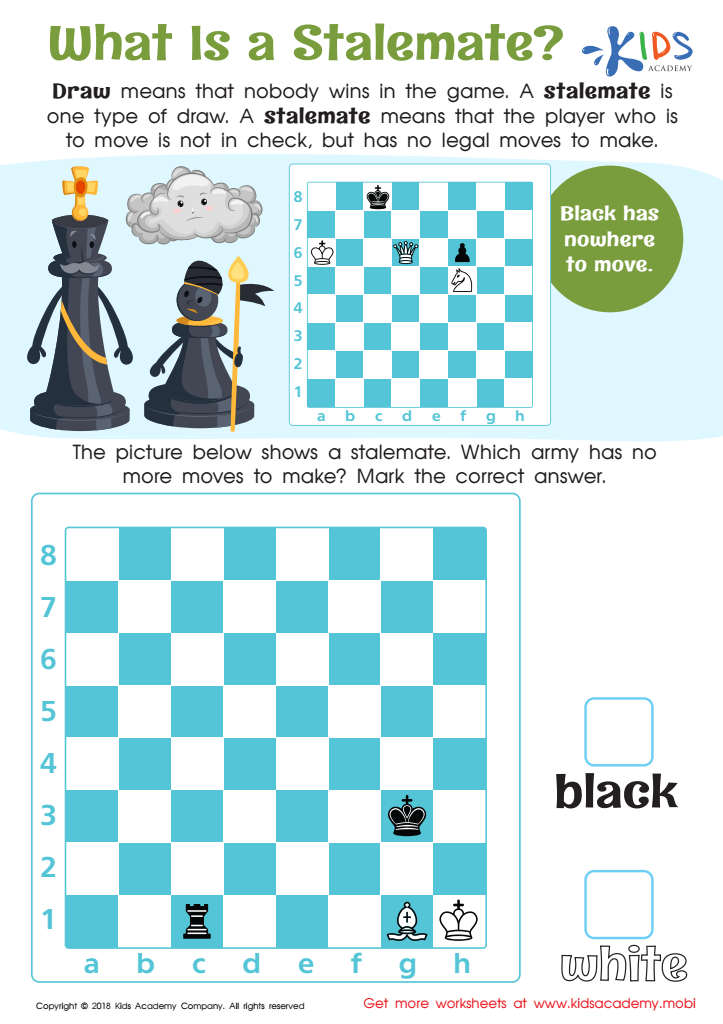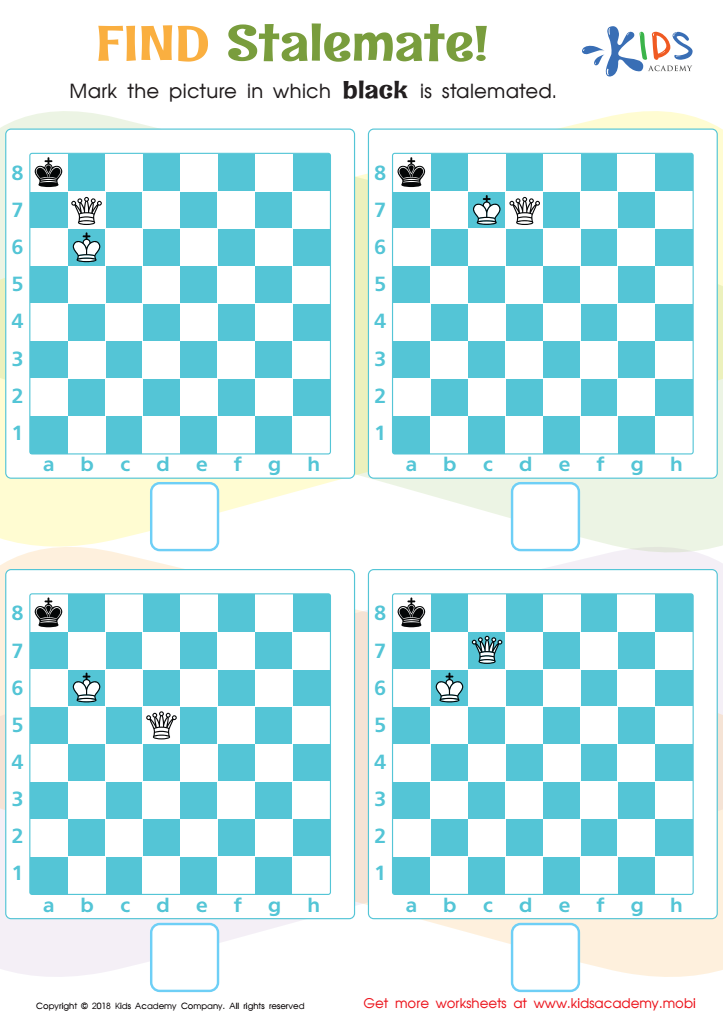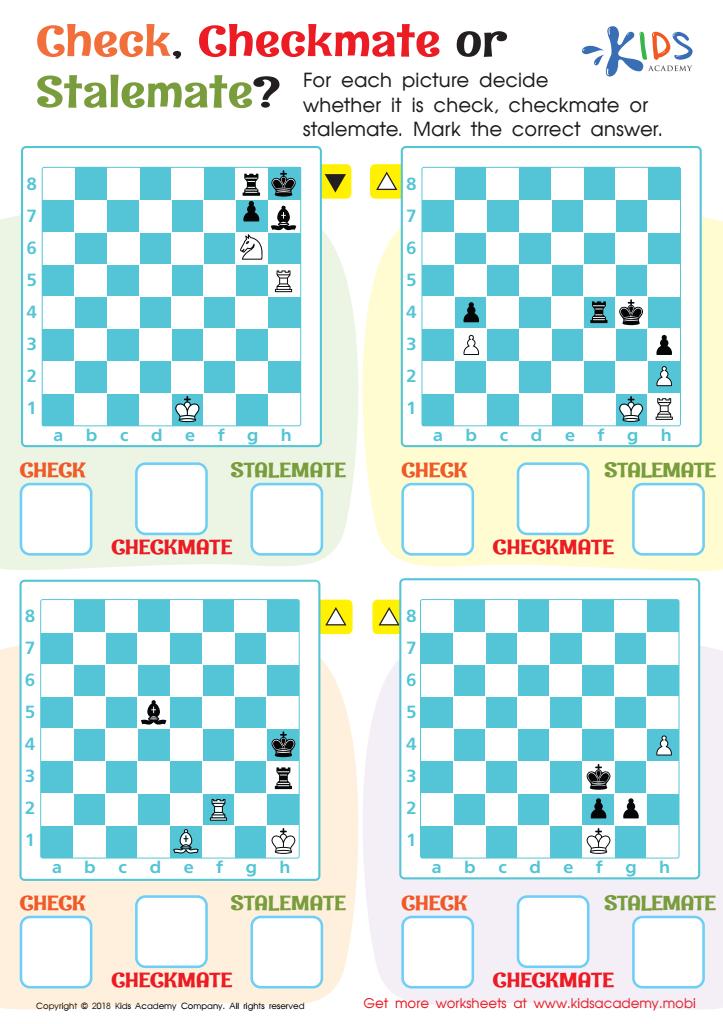What Is Stalemate? - Lesson for Kindergarten, Chapter - Purpose of the Game
In the lesson "What Is Stalemate? " tailored for kindergarten students within the unit of GAME BASICS, children will embark on an exploratory journey to understand the concept of stalemate, particularly in the context of games. This lesson falls under the chapter titled "Purpose of the Game," aiming to introduce young learners to fundamental game principles and the importance of different outcomes in games, such as winning, losing, and drawing.
Through engaging activities such as "What Is Stalemate? ", "What Is a Stalemate? Worksheet", "Find Stalemate! Worksheet", and "Check. Checkmate or Stalemate? Worksheet", students will learn to identify a stalemate situation, distinguishing it from other game terminologies like check and checkmate. This foundational knowledge is crucial as it teaches children about the concept of fairness and the value of a tie or draw in competitive situations. Understanding that not all games end with a clear winner or loser fosters sportsmanship, encouraging young players to recognize the efforts of all participants.
This lesson is important because it not only introduces students to basic chess concepts but also instills critical thinking and problem-solving skills from a young age.

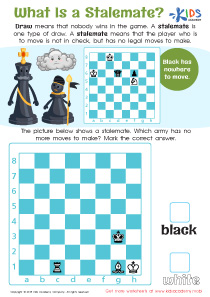
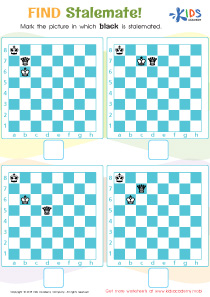
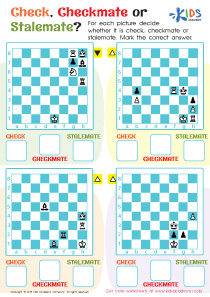
-
Activity 1 / What is Stalemate?
-
Activity 2 / What Is a Stalemate? Worksheet
The game of сhess is an excellent way to teach logic, reasoning, strategy, problem-solving and more! Even young children can grasp the concepts and with this free worksheet, you can help your child learn some basics about what a draw game means, and how a stalemate means there is no legal move for a player to make. They'll look at a sample board with possible stalemate options and decide which team, black or white, is at a stalemate.
-
Activity 3 / Find Stalemate! Worksheet
When you teach your children how to play Chess, you're not just giving them a hobby. You're also giving them incredible practice in building logical and critical thinking skills, rationale, reasoning, problem-solving and more. This free worksheet lets your child look at various sample boards to decide which sample board has the black team in a stalemate. It's great for visual discernment as well as just learning the fun of the game!
-
Activity 4 / Check. Checkmate or Stalemate? Worksheet
When it comes to сhess, sometimes you win, sometimes you lose and sometimes you're both in a stalemate, or a draw. This downloadable worksheet will give your young chess players the opportunity to look at various chess boards and decide whether or not the opposing sides are at check, checkmate or stalemate. сhess is an incredible way to teach critical thinking, reasoning and logic skills in a fun way, and your little strategist will be skill-building with every move!

